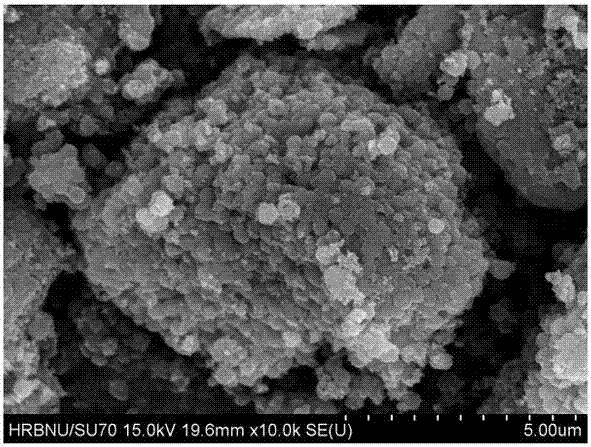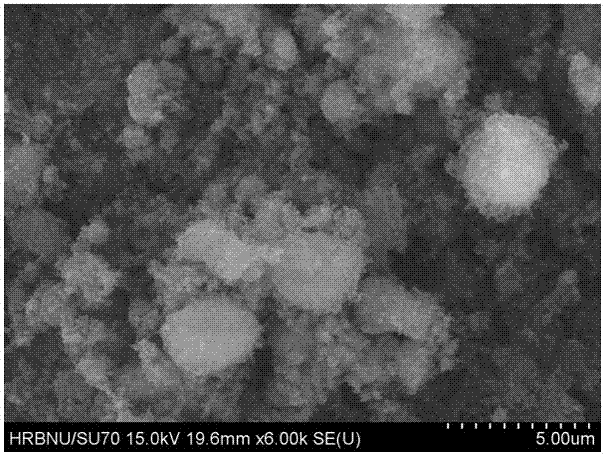Surface-modified inorganic nanoparticles as well as preparation method and application thereof
A technology of inorganic nanoparticles and surface modification, which is applied in the direction of nanotechnology, nanotechnology, nanotechnology, etc. for materials and surface science, can solve the problem of synergistic effects between polymer matrix and nanoparticles, and the absorption of composite polymer matrix. Liquidity needs to be improved, uniform dispersion is difficult, etc., to achieve the effect of enhancing interface stability, low equipment requirements, and avoiding agglomeration or phase separation
- Summary
- Abstract
- Description
- Claims
- Application Information
AI Technical Summary
Problems solved by technology
Method used
Image
Examples
Embodiment 1
[0046] In this example, the surface-modified inorganic nanoparticles are composed of the core of the inorganic metal oxide nanoparticles and the amphiphilic organic chain segment grafted on the particle surface, wherein: the amphiphilic organic chain segment grafted on the particle surface The segment accounts for 15% of the mass fraction of the inorganic nanoparticles, the inorganic metal oxide nanoparticles are aluminum oxide, and the amphiphilic organic segment consists of vinyltrimethoxysilane and 2-acrylamide-2-methylpropanesulfonic acid ( AMPS) were produced by solution polymerization.
[0047] Such as figure 1 Shown, the specific preparation method of the above-mentioned surface-modified inorganic nanoparticles is as follows:
[0048] 1. Measure 45ml of NMP solvent, transfer it to a 250ml three-necked flask, add 0.078g AMPS and 0.072g vinyltriethoxysilane, install a condensing reflux device, and pass nitrogen for 10 minutes while stirring, and then under the protection...
Embodiment 2
[0060] The difference between this embodiment and Example 1 is that the amphiphilic organic segment grafted on the surface of the particles accounts for 5% of the mass of the inorganic nanoparticles, the amount of AMPS added is 0.026g, and the amount of vinyltriethoxysilane is 0.024g, the amount of the initiator azobisisobutyronitrile is 0.001g, and the amount of lithium hydroxide monohydrate is 0.0053g.
Embodiment 3
[0062] The difference between this example and Example 1 is that the amount of poly(vinylidene fluoride-hexafluoropropylene) is 9.9g, and the amount of pore-forming agent polyvinylpyrrolidone is 2.0g.
PUM
| Property | Measurement | Unit |
|---|---|---|
| particle diameter | aaaaa | aaaaa |
| thickness | aaaaa | aaaaa |
Abstract
Description
Claims
Application Information
 Login to View More
Login to View More - R&D
- Intellectual Property
- Life Sciences
- Materials
- Tech Scout
- Unparalleled Data Quality
- Higher Quality Content
- 60% Fewer Hallucinations
Browse by: Latest US Patents, China's latest patents, Technical Efficacy Thesaurus, Application Domain, Technology Topic, Popular Technical Reports.
© 2025 PatSnap. All rights reserved.Legal|Privacy policy|Modern Slavery Act Transparency Statement|Sitemap|About US| Contact US: help@patsnap.com



